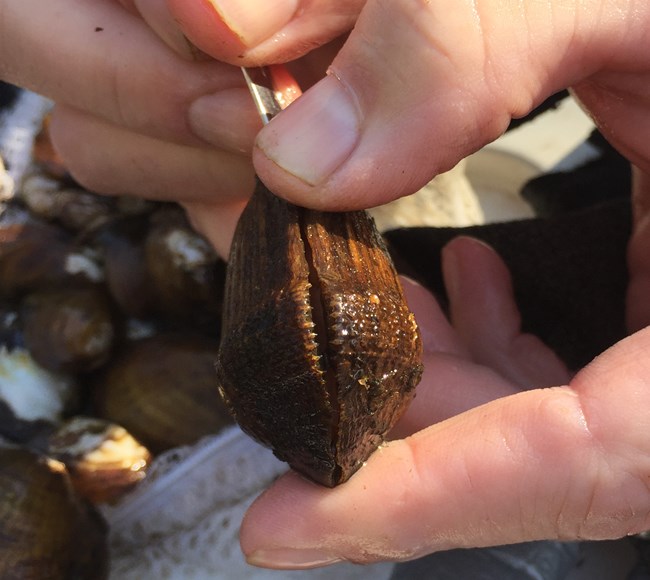
NPS Photo
The Big South Fork National River and Recreation Area and the Obed Wild and Scenic River protect nationally significant aquatic resources. The freshwater mussel habitat protected by the Big South Fork NRRA is believed to be the best remaining area where mussel are likely to persist despite stressors in the Cumberland River System. In recent years, Big South Fork NRRA has been the site for a mussel reintroduction effort aimed at restoring species which formerly occurred there, bringing the number of federally-endangered species currently documented in the park to 11. Along with many other significant aquatic resources, the Obed WSR protects one of four remaining populations of the federally-endangered purple bean (Villosa perpurpurea), as well as a small number of endangered Alabama lampmussels Lampsilis virescens), a species which was thought to have disappeared from the watershed until it was recently rediscovered upstream of the park.
Both parks are subject to a variety of potential upstream threats, including urban development, water withdrawal, agricultural activity and logging. In addition, the northern Cumberland Plateau, where Big South Fork NRRA and Obed WSR are situated, produces more coal and oil than any other region in Tennessee, much of it coming from the parks' watersheds. Mining can cause contaminated mine drainage, sedimentation, and pollution from brine and other contaminants used during mineral extraction operations. Because of the significance of the mussel fauna in these two river systems, the uncertainty of the outcome of reintroduction efforts, and the multitude of potential threats upstream from the parks, long-term trend data are needed to monitor changes in mussel populations.
Specifically, the network determines long-term trends in species composition and age class structure of freshwater mussel populations in the main stem rivers and major tributaries of Big South Fork NRRA and Obed WSR. Long-term trends in the distribution and relative abundance of freshwater mussels at the two parks is another focus of the network's monitoring efforts. Finally, the network hopes to improve its understanding of the relationship between freshwater mussel communities and their habitats by comparing physical and chemical habitat measures with changes in mussel distribution, abundance and age class structure.
Mussel surveys have been completed at both the Big South Fork NRRA and the Obed WSR have contributed to the development of a long-term monitoring protocol which will incorporate the findings of these surveys, as well as the design of the mussel reintroduction project currently underway at Big South Fork NRRA. The final protocol will likely include a combination of timed searches as well as fixed transects for measuring population parameters. The number of individuals within different size classes will be an important metric, serving as a measure of recruitment and an indicator of population health. Timed searches for rare mussels will likely be undertaken because many of the listed mussels are so rare, and so widely scattered, that conventional transect methods are not adequate to detect trends. In addition, a more comprehensive survey of the rivers and main tributaries will be periodically undertaken (every 5 to 10 years) to determine whether colonization is occurring in previously unoccupied sites.
Last updated: July 30, 2018
